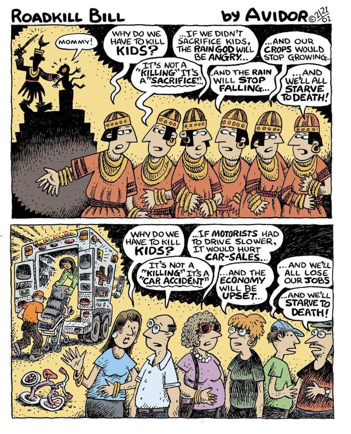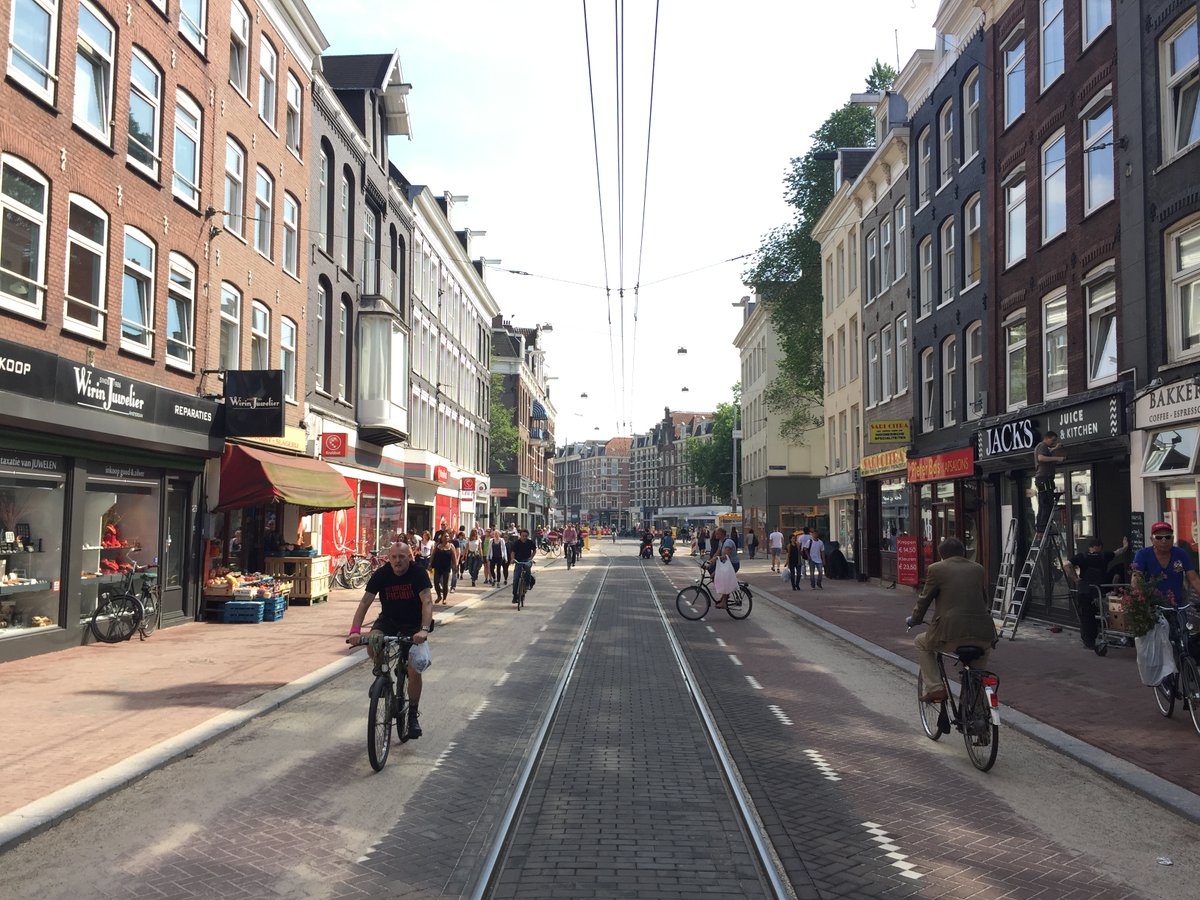
MINI LECTURE: Urban structure and mobility behavior
[1/12]
If you have ever heard people saying: ‘cycling cannot work here! Our city is much bigger than Amsterdam!!1!’
🧵👇👇
[1/12]
If you have ever heard people saying: ‘cycling cannot work here! Our city is much bigger than Amsterdam!!1!’
🧵👇👇

[2/12]
The City of Amsterdam is a central part of a much larger daily urban system.
The Amsterdam Metropolitan Region (@MRAsamenwerking ) spans 2.580 km2 and houses 2.5 million people.
This includes @Schiphol, @Lelystad, @almere, @ZandvoortaanZee.
The City of Amsterdam is a central part of a much larger daily urban system.
The Amsterdam Metropolitan Region (@MRAsamenwerking ) spans 2.580 km2 and houses 2.5 million people.
This includes @Schiphol, @Lelystad, @almere, @ZandvoortaanZee.

[3/12]
A whopping 47% of ALL TRIPS from/to/within the region are made by foot 🚶 or by bicycle 🚲.
(according to mobility diary research. Source: samenbouwenaanbereikbaarheid.nl/application/fi…)
A whopping 47% of ALL TRIPS from/to/within the region are made by foot 🚶 or by bicycle 🚲.
(according to mobility diary research. Source: samenbouwenaanbereikbaarheid.nl/application/fi…)

[4/12]
So cycling/walking do not stop at the border of Amsterdam city center or at the built-up area.
They count for almost half of all trips for this entire region of 2.5 million people. So, how does THAT compare?
So cycling/walking do not stop at the border of Amsterdam city center or at the built-up area.
They count for almost half of all trips for this entire region of 2.5 million people. So, how does THAT compare?

[5/12]
We can drag and drop this area to other metropolitan areas.
Here, we overlay it on Mexico City. With 8.8 million inhabitants it offers a much higher average density on roughly the same area.
DIY: maps.amsterdam.nl/hoegroot/?LANG…
We can drag and drop this area to other metropolitan areas.
Here, we overlay it on Mexico City. With 8.8 million inhabitants it offers a much higher average density on roughly the same area.
DIY: maps.amsterdam.nl/hoegroot/?LANG…

[6/12]
Not similar, sure. But certainly comparable:
🇬🇧 London: 9 million inhabitants
🇫🇷 Paris: 2.1 million inhabitants
🇺🇸 Atlanta: 5.6 million inhabitants
🇦🇺 Sydney: 5.3 million inhabitants



Not similar, sure. But certainly comparable:
🇬🇧 London: 9 million inhabitants
🇫🇷 Paris: 2.1 million inhabitants
🇺🇸 Atlanta: 5.6 million inhabitants
🇦🇺 Sydney: 5.3 million inhabitants




[7/12]
Many urban areas are similar in size and have higher population densities (better conditions for cycling).
Yes, we can discuss differences. But what CAN we learn from this? Why does cycling/walking work on this larger scale?
Many urban areas are similar in size and have higher population densities (better conditions for cycling).
Yes, we can discuss differences. But what CAN we learn from this? Why does cycling/walking work on this larger scale?

[8/12]
One reason is that most trips (BY FAR) are local. To go to school 🏫, shopping 🛒, visiting 👩❤️💋👨.
We tend to focus on long distance trips, due to our mainstream mobility narrative. See: coursera.org/learn/alternat…)
(🟢 = Supermarket/pharmacy within 15 minutes: by @BertVanRest)
One reason is that most trips (BY FAR) are local. To go to school 🏫, shopping 🛒, visiting 👩❤️💋👨.
We tend to focus on long distance trips, due to our mainstream mobility narrative. See: coursera.org/learn/alternat…)
(🟢 = Supermarket/pharmacy within 15 minutes: by @BertVanRest)
[9/12]
If we zoom in, that is what we see here as well. Walking 🚶 and cycling 🚲 accounts for 64% (‼) of all local trips!
This is where the large potential lies for other cities as well!
Source: samenbouwenaanbereikbaarheid.nl/application/fi…
If we zoom in, that is what we see here as well. Walking 🚶 and cycling 🚲 accounts for 64% (‼) of all local trips!
This is where the large potential lies for other cities as well!
Source: samenbouwenaanbereikbaarheid.nl/application/fi…

[10/12]
As @FrauKrone keeps saying: “it is the infrastructure, stupid”
Instead of bicycle highways, this means we should focus first on creating local safe infrastructure. That’s where it can really count!
But that's not all...
As @FrauKrone keeps saying: “it is the infrastructure, stupid”
Instead of bicycle highways, this means we should focus first on creating local safe infrastructure. That’s where it can really count!
But that's not all...

[11/12]
Very few people cycle large distances between cities throughout the region.
For those trips many combine cycling with the high-quality transit services of @NS_online. Most people have a high number of trains 🚃 within cycling distance.
Details: pure.uva.nl/ws/files/26133…
Very few people cycle large distances between cities throughout the region.
For those trips many combine cycling with the high-quality transit services of @NS_online. Most people have a high number of trains 🚃 within cycling distance.
Details: pure.uva.nl/ws/files/26133…

[12/12]
Cycling + transit creates synergies: combining door-to-door flexibility with high speed and high capacity outperforms the car on most relations in the region.
A system that can successfully break car-dependency in any context!
Cycling + transit creates synergies: combining door-to-door flexibility with high speed and high capacity outperforms the car on most relations in the region.
A system that can successfully break car-dependency in any context!

• • •
Missing some Tweet in this thread? You can try to
force a refresh





















